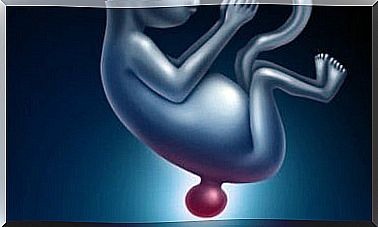Fascinating Facts About Breast Milk Fats

Breast milk fats have functions beyond simple nutrition. Milk is a living, changing tissue and as such its composition is not uniform. Amazingly, the components vary throughout the day and between feedings. It also changes gradually according to the age of the baby.
While the mother’s diet is not a determinant of these changes, some nutrients may be affected by the mother’s consumption. In general, the composition of breast milk is specifically tailored to the developmental needs of her baby. This is true at any stage of growth, including the needs of premature babies.
The energy content of breast milk is mainly obtained from two components. The first, lactose, is the most abundant component in milk. The other component is the fat present in breast milk.
It is interesting to remember that in addition to milk fat, our bodies also pass on fat-soluble molecules. Think, for example, of vitamins A, D, E, K and other carotenoids. Today we are going to talk about three interesting facts about these breast milk fats.

1. Breast milk fats are released in an emulsion
Milk is an emulsion with fat particles, known as fat globules, dispersed in an aqueous liquid (whey). The cells of the breast epithelium produce these fat globules. They come in a variety of sizes, with diameters ranging from 0.1 to 10 microns.
In terms of composition , they contain substances that are characteristic of the breast epithelial cells. Scientists have found that these contain high levels of triglycerides. However, their main feature is that they are covered by a unique structured membrane known as the milk fat cell membrane.
Why is this membrane important?
It is very interesting to know that this membrane has three layers of phospholipids, while in the rest of the body it has only two. Due to this unique structure of the membrane , the fat globules do not bind to each other and the fat particles remain separated from the aqueous substance.
In addition, the structure and composition of this membrane makes it possible to transport metabolically important lipids, such as sphingomyelin and gangliosides. At the same time, the milk fat cell membrane is a source of many other bioactive substances. These include, for example, glycolipids, glycoproteins and carbohydrates, which have important functions in the brain, gut and immune system.
2. Fat globules in breast milk influence the development of intelligence
The membrane lipid components of the fat cell, such as sphingomyelin and gangliosides, are highly concentrated in the brain. Experts have found that they help form the connections (synapses) between neurons, as well as the production of myelin.
Myelin is important because it acts as the insulator of the axons, resulting in more efficient transmission of brain impulses. Myelination is a process responsible for much of brain growth during late pregnancy and the first two years of life. However, this process can also continue until a child is 5 or even 10 years old.
Researchers have conducted several clinical studies on children ranging from preterm infants to preschoolers. They showed that nutritional supplementation of the milk fat cell membrane improves cognitive process and behavior.
3. Breast milk fats boost the immune system and promote gut health
Animal studies have shown that gangliosides boost the immune system. In addition, other components that transport the fat globules also influence the immune response. Such components include various proteins, such as lactadherin, mucin-1 and butyrophilin.
Each of these affects the immune system through different processes. For example, they can interfere with the attachment of pathogenic microbes to the intestinal epithelium. Others have a bactericidal effect and may even aid the development of the gut microbiota.
We hope this article showed you the amazing properties of breast milk and how it affects a child’s growth in many different ways.









